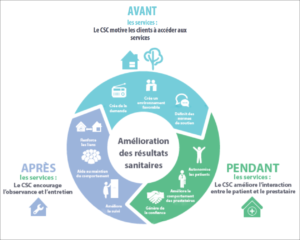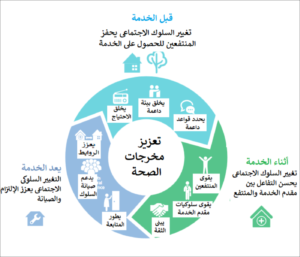The Circle of Care Model
 The Circle of Care Model shows how service delivery and social and behavior change (SBC) can work together to improve health outcomes.
The Circle of Care Model shows how service delivery and social and behavior change (SBC) can work together to improve health outcomes.
Three key principles support the model:
- Effective coordination among SBC and service delivery partners – promotes common understanding regarding program planning, message development, intervention approaches and monitoring and evaluation
- Segmenting, prioritizing and profiling of key audiences – helps to understand the intended audience and learn about their specific needs, values and barriers to change
- Address providers as a behavior change audience – ensures providers are seen as individuals who have needs and barriers to adopting desired behaviors related to their performance.
This video, uses examples from HC3 country projects in Nepal, Nigeria and Swaziland, to illustrate the integral role SBC interventions played along the service delivery continuum in achieving positive outcomes.
To learn more about these key principles and the integration of SBC and service delivery, visit HC3’s Service Communication Implementation Kit.



Leave a Reply
Want to join the discussion?Feel free to contribute!